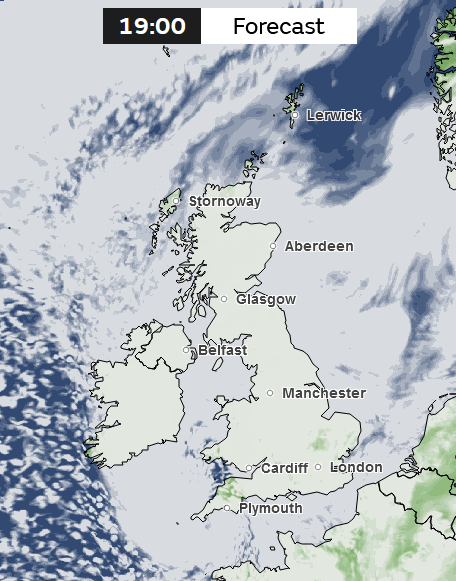

other than dire emergencies
if you got to ditch the cart for safety, that’s fine


other than dire emergencies
if you got to ditch the cart for safety, that’s fine


n = 40, this is junk. they couldn’t even get 100 people for this?
these were all sampled from 1 company in amsterdam. the differences could be explained by company culture, or local culture, or whatever. more work needed.
here you go:

more can be found like this, @chichi__charlie in any good web browser
oh my goodness that’s a painting
i was scrolling idly and thought it was a mid smartphone photo
wow 🤯
it’s an example of simpson’s paradox
https://en.wikipedia.org/wiki/Simpson's_paradox
a worked example: if england/scotland/wales all use heart ❤️ 49% and use tears of joy 😂 at 51%, and then northern ireland was to use heart ❤️at 100%, you can imagine this would tip the whole uk over
even more freaky, you could make all 4 constituent countries use heart ❤️ at 49%, make each constituent use a different unique emoji 👍😀🥰😼 at 51% each, and then the aggregate would show that heart ❤️ is still the most used across the UK
now consider for each place on this map, they are ranking more than just 2 emojis. the map itself says that tears of joy 😂 is only scoring 5% worldwide, and that’s 1st place. with margins of 5% and under to be deemed winner, it’s no wonder funky effects show up
aww it’s like hardstyle shuffle rave phat pants!


ok, here’s the context. (click here)
the source of this file, regrettably, is the daily mail. broken clocks and all that. i will link the “article” that the video file was from, but you will need a hazmat suit going in, for both the cookies/trackers and low quality writing
here’s that source now. (click here)
for posters below saying they couldn’t find this, i understand it. we all get different search results, it’s possible you all got hugboxed and were unable to find the clip as a result
also, i don’t care to discuss the topic, i only wanted to link the source, because you were all struggling with it. i like finding sources :)
have a nice day 🥰
why would future humans bother bringing all these people back
i think it’s worth reminding why doctors treat people now, in this time and space. they do it mostly because they want to save people. maybe a few do it for money, but past a certain point, the money isn’t why you do it. i think it’s a safe bet that doctors of a future would see these corpses as patients, and act accordingly. an analogy - think how we see heart attack victims as patients, and not how our medieval ancestors would have seen them (as corpses)
…literally nothing positive to contribute to the utopian future…
true, but, a good chunk of patients in hopsital today have nothing to contribute to society, and cannot contribute any more, whatsoever. we treat them anyway, because that’s what we do. humans have consistently cared for others that are sick and have “nothing to contribute” throughout history, and that shows no sign of going away anytime soon


here’s one example for you (click here) exploring igbo gender norms
here’s a second report that’s worth reading too (click here)
i don’t have much knowledge about the other cultures suggested, others can provide info for those
okay, here’s al jazeera reporting on the ballistic missile, it’s a one liner but it’s something
this is a saturation attack imo, the question is, at what target?
citing abc news (link here), us official says 400 to 500 drones
unconfirmed reports of ballistic missiles in the air too, it’s all osint right now so no good source on that yet, if i get one i’ll add it as a reply
take a look here at the papa johns live activity meter next to the pentagon on google maps 🍕

oh god they’re actually doing it
that’s a really cool map, thank you for posting 🙂

i’ll be honest, unless you’re at the west coast of ireland, probably give this one a miss. :(


yep, you’re entirely right. for your area, it’s more effective to run wells for each person. the frustrating part being that, it implies that the city has been designed so, so badly, that individuals can’t actually share resources, without the per capita price going up if they do so.
even without depopulation, that’s a huge governmental failure. if individuals are having to run all their own utility setups and infrastructure, is that even a “city”? it sounds more like rural living but it’s all vaguely connected. presumably as a result of this low density, you have higher ongoing costs elsewhere? i.e commutes to work, cost of food, etc
if not, then it could be one of those taxpayer-subsidised things, where it feels cheaper for each resident, but the reality is that someone else is paying for it. i’m not good at wording what i mean in this case, but i will pass you to this video (https://www.youtube.com/watch?v=7Nw6qyyrTeI) to show it instead, he does a better job of explaining what i’m talking about
anyhow… that’s crazy! it’s entirely the thing i’m worried about seeing replicated large scale as a result of a reduction in population


i do get where you’re coming from, population density was less than it was. as a consequence, people had less access to resources. i would argue as a result of this, they also had less quality of life. the reason that urbanization has been a trend over the past 150 years that shows no sign of stopping, is because population urbanization is a multiplier on the effectiveness of quality of life, because it makes the cost to maintain higher quality of life cheaper per unit of life.1
for example, yes, you can supply a neighbourhood with individual wells, granted. but surely it would be cheaper for your community to build one massive well, and then everyone in the neighbourhood can collect the water at the well? the community could all pay their share to maintain the well, and then the per unit cost of the well would be cheaper to build and maintain.
whilst you’re at it, since there’s only one well, you can put in a really fancy pump and purifier system. a really high quality rig, with low cost to run. that way, you only need to maintain 1 efficient pump and purifier, rather than 20 or 30 less efficient ones that would cost more fuel to run as an aggregate. the unit cost per person of the pump and purifier setup would be cheaper to run and maintain.
if you wanna go really bougie, you could all chip in to collectively install pipes to every house so that your local community doesn’t have to walk to the well. if you build slightly more pipes than you need, this would act as insurance so that if one pipe breaks, you don’t all lose supply, and the water could flow round… other pipes… and… …wait this just sounds like a municipal supply but with extra steps…
i know i’m being facetious, but the reality is that it is just not measurably cheaper to live out in isolated pockets, through supplying individual infrastructure on a per person basis.2 economies of scale dictates this relationship.3 it’s inescapable.4. it’s inevitable.5 by all means, if it’s the only option someone has to provide utilities for themself, they should use it. but let’s not pretend that it’s more expensive to group up, live closer, and share the cost burden through communal resources.
i will trust you are aware of “economies of scale”, but i have linked a video here for those who are not aware, and also don’t want to read papers like a total nerd. ☝️🤓
[1]. (??? what would the units for quality of life per capita be i wonder? joy/kg? lol)
[2]. “The results indicate that cost savings can be achieved by increases in the scale of production…”, from “Productivity growth, economies of scale and scope in the water and sewerage industry: The Chilean case”, by Molinos-Senante and Maziotis, accessible at https://www.ncbi.nlm.nih.gov/pmc/articles/PMC8162666/
[3]. “…more spread out settlement (“Dispersion”) leads to diseconomies in distribution…”, from “Economies of scale, distribution costs and density effects in urban water supply: a spatial analysis of the role of infrastructure in urban agglomeration”, by Hugh B., accessible at https://etheses.lse.ac.uk/285/
[4]. “…agglomeration economies make firms and workers more productive in dense urban environments than in other locations.”, from “The economics of urban density”, by Duranton and Pupa, accssible at https://diegopuga.org/research.html#density
[5]. “Econometric analysis of the data from the Big Mac price survey revealed a significant positive effect of being in a rural area on the increase in prices.”, from “Identifying the size and geographic scope of short-term rural cost-of-living increases in the United States”, by Díaz-Dapena, Loveridge & Paredes, accessible at “https://link.springer.com/article/10.1007/s00168-023-01244-z”
> implying you don’t know what an implication arrow is
it’s one of these: >